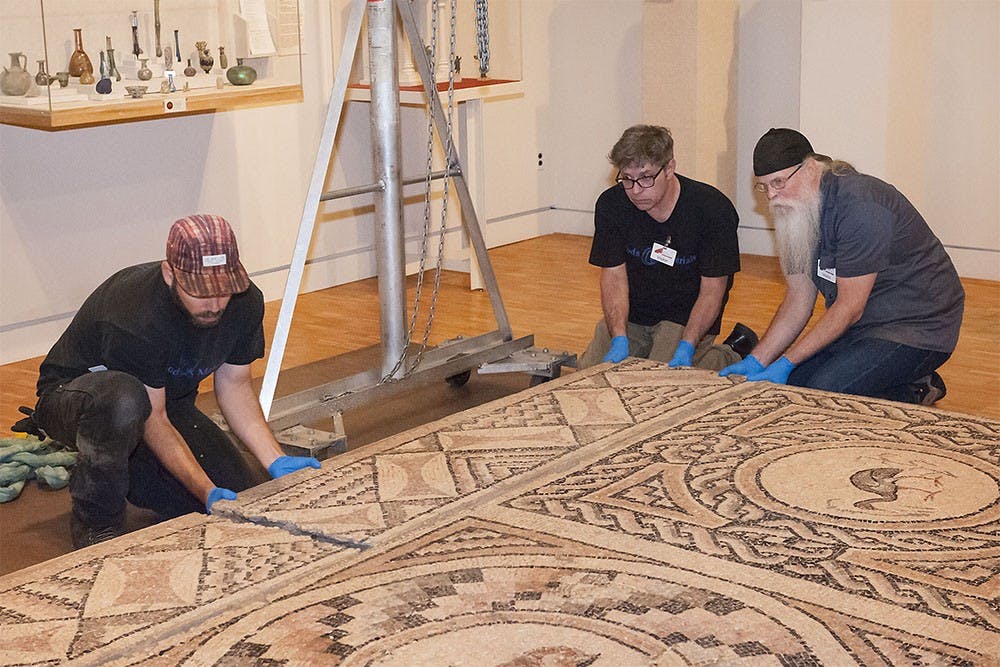The mosaic, which had been part of the IU Art Museum’s ancient art exhibition since it was borrowed from the J. Paul Getty Museum in Los Angeles in 1991, was removed over the course of two days last week to be returned to its home museum.
Excavated in 1937 by an archaeological team from Princeton University, the Réunion des musées nationaux de France, the Worcester Art Museum, Wellesley College, the Baltimore Museum and the Dumbarton Oaks Library and Collection, the piece was once part of the flooring in the main hallway of an old Roman bath house, said Juliet Graver Istrabadi, acting curator of anicent art at the IU Art Museum.
The mosaic was originally created as part of the Bath of Apolausis in Antioch, located in modern-day Syria, in the early fifth century AD, Istrabadi said.
The mosaic was removed in three pieces, Istrabadi said, with the center piece weighing about 2,000 pounds and the two outer pieces weighing roughly 1,000 pounds each.
She said the benefit of having the mosaic in the gallery was its ablity to connect visitors to another culture.
“People from 2,000 years ago walked on this, saw this, reacted to it the same way we are,” she said. “It was part of their life, and it helps us to sort of visualize their world.”
Now that the mosaic has been removed, Istrabadi said she’s been rearranging the gallery and introducing new pieces which haven’t been on display for some time.
Those pieces include sculptures, lamps and jewelry, just some of the thousands of pieces the museum has in storage.
“I’m going to bring out some jewelry, and I’ve brought out some small bronzes,” Istrabadi said. “We have a lot of beautiful bronzes in our collection, so I’ve brought out a selection of those.”
She joked picking her favorite piece in the collection was like a mother having to choose her favorite child.
“I honestly appreciate the variety,” she said. “We have such different things ... the fact that some things are very geometric and very stylized and almost abstract and others are so naturalistic, that I find fascinating.”
Since it opened in 1941, the museum has been home to thousands of artworks, including pieces by acclaimed artists such as Claude Monet and Pablo Picasso, according to the museum’s website. The internationally recognized museum now houses more than 45,000 pieces of both art and artifacts.
The mosaic helped teach visitors about the lives of people living in the Roman Empire, and though the piece has been removed, the gallery still has many lessons to teach its visitors.
“The mosaic helped set that stage and gave us a whole, big piece of one of the buildings they would have walked on and how they decorated, but all of our objects do that,” she said. “Again, they are beautiful things in themselves, and then they add to an understanding of a world that is gone but is still linked to us in spite of the time ?differences.”






